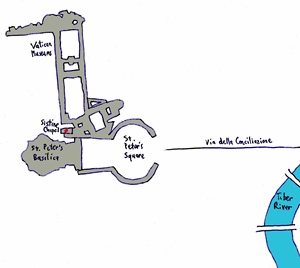
Vatican Attractions on the Map
Back to Sant’Andrea Church Continue to Pinacoteca
Strictly
speaking,

Vatican Attractions on the Map
The
first place we wanted to visit in
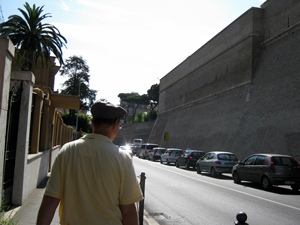 Following the Wall |  The Line |
The Vatican Museums are not
included in the
The Vatican Museums represent one of the great museum complexes in the world. It’s technically arranged as a collection of smaller museums, but everything’s connected, so it might be more natural to think of it as one big museum. There are areas of concentration on particular subjects, either adjacent to each other or connected by long galleries, and there are recommended routes for seeing everything.
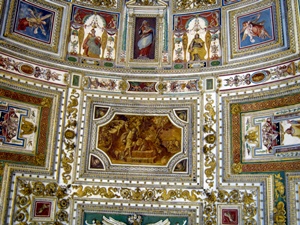 Ceiling Detail, Gallery of the Maps | 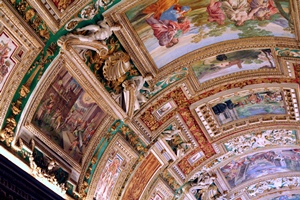 Ceiling, Gallery of the Maps |
 Nella and Italy Map |  Gallery of the Maps HD Video (21.0 MB) SD Video (7.8 MB) |
There is a large courtyard surrounded by some of the galleries, called the Cortile della Pigna, named after a gigantic first or second Century bronze pinecone located at one end.
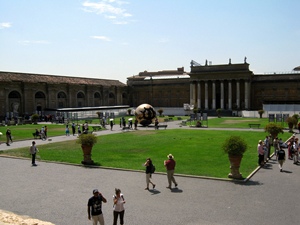 Cortile della Pigna | 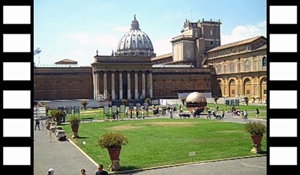 Overview, Cortile della Pigna SD Video (3.2 MB) |
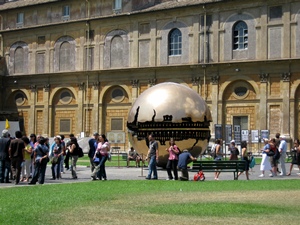 Sphere Within Sphere, Arnaldo Pomodoro |  Nella and Connie in Courtyard HD Video (19.4 MB) SD Video (10.7 MB) |
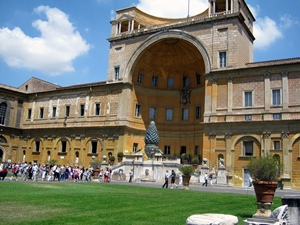 Alcove with Giant Pinecone | 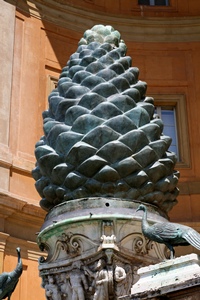 Giant Pinecone |
During our visit, nearly all of the indoor space was compacted with
bodies of tourists, probably common for the tourist season. On the last Sunday of each month, admission
is free. On such days the crowding is no
doubt increased, and it’s difficult to image how anyone is able to move.

Crowd, Gallery of the Candelabra
HD Video (19.3 MB) SD Video (8.2 MB)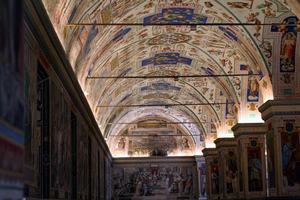
Sistine Hall
The collection of the Vatican Museums is too big and varied to treat properly as a single page, so it’s been broken up here into multiple pages. First, we’ll look at some paintings.